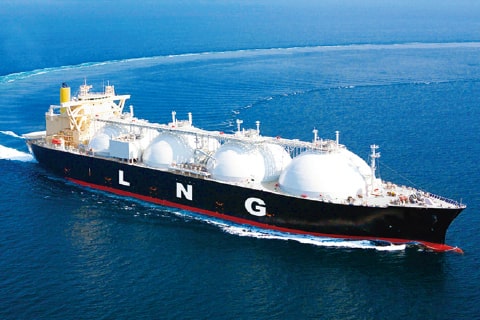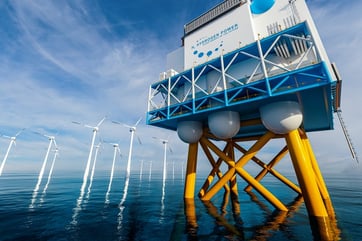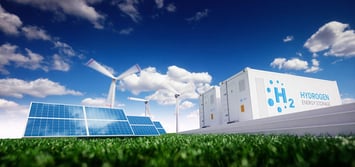Article: International experts predict a bright future for Australian hydrogen
Australian hydrogen has the potential to play a pivotal role in a global hydrogen economy, but its success hinges on strong climate action from governments around the world, according to international experts interviewed ahead of the Australian Hydrogen Forum 2022.
We recently spoke with Ian Cronshaw, former Divisional Director at the Paris-based International Energy Agency (France), Dr Motohiko Nishimura, Vice Executive Officer of the Hydrogen Project Development Centre at Kawasaki Heavy Industries (Japan), and Holger Lösch, Deputy General Manager of BDI (Federation of German Industries).
Hydrogen’s future hinges on strong climate policies
According Ian Cronshaw, the key factor that will determine hydrogen’s future is the degree, scope, timing and effectiveness of governments’ policy measures in addressing energy-based greenhouse gas emissions, along with the ambitions for the hydrogen sector embedded within those strategies.
As things stand, existing climate policies around the world will not provide an incentive needed to jump-start a hydrogen economy. “Looking at existing and announced policies as of early 2020, global emissions of energy-based CO2 were projected to remain relatively steady for the next two decades. This is obviously inadequate to avoid dangerous climate change – and [if nothing changes], demand for low carbon hydrogen would be minimal.”
 “A more sustainable case, projecting a fall of almost 30% in energy-based emissions by 2030 and almost half by 2040, sees a massive investment in clean energy technologies over the next decade. The world’s low-carbon hydrogen production could be expected to increase to 20 Mt in 2030 and almost 80 Mt by 2040, equivalent in energy terms to around 60% of Japan’s total energy use.”
“A more sustainable case, projecting a fall of almost 30% in energy-based emissions by 2030 and almost half by 2040, sees a massive investment in clean energy technologies over the next decade. The world’s low-carbon hydrogen production could be expected to increase to 20 Mt in 2030 and almost 80 Mt by 2040, equivalent in energy terms to around 60% of Japan’s total energy use.”
Although strong climate policies are yet to emerge, there have been several promising developments that are accelerating the pivot to hydrogen. Australia, for example, has announced a raft of international partnerships along with the development of regional hydrogen export hubs as part of a $300 million Hydrogen Fund through the Clean Energy Finance Corporation.
Internationally, recent announcements in support of hydrogen include Germany’s US$10 billion Hydrogen Strategy, the EU plan for 6 GW of renewable powered electrolysers by 2024, rising to 40 GW by 2030. “In a net-zero world, production of hydrogen could be expected to rise from today’s levels of around 90 Mt to over 500 Mt by 2050, equivalent to more than half the energy use of the EU currently. If this quantity of hydrogen were to displace natural gas, it would account for almost half current gas use, and assuming zero carbon production, over 3 Gt of emissions,” says Cronshaw.
German and Japanese climate policies driving hydrogen demand
Both Nishimura and Lösch point to government climate policies when asked to forecast the future of hydrogen.
“Climate change is a massive global threat requiring urgent action, and clean hydrogen can play a key contributing role,” says Nishimura. “We need very large quantities of clean hydrogen to be produced to meet growing demand and reduce CO2 emissions.”
“Liquefied hydrogen, which Kawasaki is promoting as a hydrogen carrier, can reduce the volume dramatically (1/800th). It is nontoxic, non-pollutant, it has no greenhouse effect itself and is thus ideal for mass transport and storage of energy, and it can connect multiple industry sectors. A broad range of technologies and industries have been involved in hydrogen demand and supply, which creates a virtuous cycle of sustainable economic development.”
Lösch says that German climate policy is also a major driver for the emerging hydrogen economy. “Our federal government recently amended the national climate change act and tightened the target of climate-neutrality which is to be achieved by 2045. This also tightens the sectoral targets and requires emissions reductions of 60% in the energy sector, 43% in transport and 37% in industry by 2030. While renewable electricity will become the most important energy carrier to defossilise these sectors, only 20% of Germany’s final energy consumption is provided by electrons. Hydrogen offers the opportunity to integrate renewable energy where direct electrification is not possible or economically favourable, either by being directly used as a gas or by being converted in hydrocarbons. Therefore, low-carbon hydrogen and its derivates at competitive prices and in sufficient quantities are needed to still be an industry nation in the future.”
At the same time, says Lösch, Germany is a leading technology provider for hydrogen technologies, especially in the field of electrolysis. “An increase of already 20 GW per year would mean revenues of several billions annually. On average, about 117,000 additional jobs can be created. Combined with Germany’s industrial suppliers and know-how in the field of power-to-liquid technologies, gas turbines for hydrogen as well as the industrial use of hydrogen, the country is well-positioned to seize the economic potential of a global hydrogen economy and to strengthen domestic and European value chains.”
Which industries are most likely to convert to hydrogen?
 As an increasing number of countries pledge to reduce carbon emissions to net zero by 2050, we can anticipate widespread carbon pricing, greater electrification of economies, and a vast increase in renewable and other low-carbon power. Cronshaw predicts this will include the use of hydrogen in applications such as steel, chemicals, and transport. “Hydrogen will be a source of flexibility, much as the conventional natural gas industry provides today,” he says.
As an increasing number of countries pledge to reduce carbon emissions to net zero by 2050, we can anticipate widespread carbon pricing, greater electrification of economies, and a vast increase in renewable and other low-carbon power. Cronshaw predicts this will include the use of hydrogen in applications such as steel, chemicals, and transport. “Hydrogen will be a source of flexibility, much as the conventional natural gas industry provides today,” he says.
In Germany, Lösch says, hydrogen and its derivates will offer true low-carbon alternatives for hard-to-abate sectors. “In the market ramp-up phase, Germany’s National Hydrogen strategy sees hydrogen as an opportunity to defossilise steel making, parts of chemical as well as parts of transport especially shipping and aviation.”
“One of the most important vehicles for hydrogen to become a game-changer for demand sectors is to create regulatory framework conditions that enable and secure reliable uptake of hydrogen and other renewable energy carriers. This could be done by instruments that bridge the gap for economic viability such as quotas in sectors like transport, funding of capital costs, or contract for differences. Only then will enough hydrogen be supplied for the sectors to convert to hydrogen-based processes.”
Nishimura believes hydrogen uptake will be greatest in mobility, power generation, heating processing, energy supply and broader technology sectors. “A new hydrogen market will act as a catalyst for further research and development activities, attracting further investment in both Australia and Japan”, he says.
Costs
Global experience with renewable power shows that strong, long-term policies can drive deployment, provide economies of scale and technology innovation, with costs falling by an order of magnitude over the last decade.
“A similar approach working within existing markets could see hydrogen derived from electrolysis using renewable power sources fall from current levels of US$60/MBtu to less than half that in the next decade, with production from natural gas coupled with CCS at around US$20/MBtu,” explains Cronshaw. “By 2050, costs could be in the range of US$8-15/MBtu, equivalent to US$1-2/kg, roughly in line with the Australian Government target. Cost needs to be seen against policies that will affect the prices of conventional alternatives, including carbon costs, and regulatory measures affecting (for example) oil-based transport.”
From an export viewpoint, Australian hydrogen could be converted to more easily transported energy carriers such as ammonia or even synthetic hydrocarbon fuels, but this would add to costs; around 15% in the case of ammonia. The latter chemical has the advantage of greater compatibility with existing end-use technologies.
Cronshaw warns that an export-based industry would be very capital intensive. “A valuable lesson from Australia’s massive gas export industry is the importance of securing long-term demand contracts to underpin financing, especially in the early phases of the industry. An additional lesson is the importance of secure domestic demand, both to underpin project economics, but also to demonstrate to potential markets reliable and affordable supply. These points are clearly recognised in the government’s National Hydrogen Strategy.”
When will Germany and Japan need to import Australian hydrogen?
Estimates on the future demand of low-carbon hydrogen and its derivates can vary, says Lösch. “Most existing studies agree that Germany will not be able to completely supply its demand by domestic production. Germany’s current demand for hydrogen is about 55 TWh (supplied by grey hydrogen). The national strategy expects a demand of up to 110 TWh in 2030 while having a capacity target for electrolysis of only about 14 TWh. Looking at demands beyond 2030, the supply-delta demand is expected to increase even further. The demand for PtX-products such as synthetic fuels is expected to be supplied from foreign countries, with some expecting import quotas of almost 100% by 2050 or earlier.
In Japan, the Hydrogen Energy Supply Chain (HESC) Project aims for a multi-billion dollar Commercial Phase to begin in the 2030s. “This will establish a commercial-scale supply chain for clean hydrogen produced from Victorian coal in the Latrobe Valley, to import to Japan,” says Nishimura.
Australian hydrogen on the world stage
Victoria has a significant competitive advantage due to its abundant, world-class brown coal resources and world-leading potential for carbon capture and storage (CCS). “Producing clean hydrogen using a fossil fuel with CCS is presently, as assessed by the International Energy Agency (IEA), the most economical way to produce clean hydrogen at scale,” says Nishimura. “Victoria has existing skills and assets that provide a strong foundation for the production of hydrogen. These factors give our HESC Project the ability to rapidly scale up clean hydrogen production, which can occur 24/7 and meet potential growing demand for hydrogen in Japan.”
The commercial HESC Project is estimated to earn billions in export revenue for Australia and will represent a strong trade and investment success story between Australia and Japan. Nishimura notes that in mid-June 2021, Australian Prime Minister Scott Morrison and Japanese Prime Minister Yoshihide Suga engaged in a discussion on the sidelines of the G7 summit and announced Australia and Japan’s joint Partnership on Decarbonisation Through Technology. The role of the HESC Project was singled out, once again, as an initiative of national significance for both countries with enormous global potential for broader decarbonisation.
Lösch warns that in Europe’s case, the distance between Australia and Europe must be taken into account. “Because no intercontinental and large-scale supply chain for hydrogen has been established yet, the question of how to ‘ship the sunshine’ has not yet been answered. Therefore, we’re looking at different transport options for hydrogen but also energy carriers such as ammonia and methanol. Once the hydrogen bridge between both countries has been demonstrated, Australia can become a reliable and long-term supplier for renewable energy carriers for Germany and Europe. This would also enable us to establish other international supply chains to eventually create a global hydrogen economy.”
“Global competition can be expected from existing hydrocarbon producers using CCS,” says Cronshaw, “and indeed hydrogen production close to potential markets, such as Japan or the EU, using, for example, offshore wind power. The likely emergence of some type of international classification or labelling scheme would provide a premium for the lowest or zero-emission technologies.
“Local demand for hydrogen will be one key in expanding the hydrogen industry. Such demand could be achieved by blending mandates for hydrogen into existing gas networks, and drawing on the ability of gas to provide seasonal and diurnal flexibility, likely to be in increasing demand as renewables penetrate further into the expanding power supply.”
You can hear more about the future of Australian hydrogen at the Hydrogen Energy Stream in the Australian Energy Week 2022.
Energy Monthly
Get a different perspective on energy with our monthly newsletter.
Up next
.png)

Creating clarity during the energy transition.
Get a different perspective on energy with our monthly newsletter.

All rights reserved Energy Insights Pty Ltd





